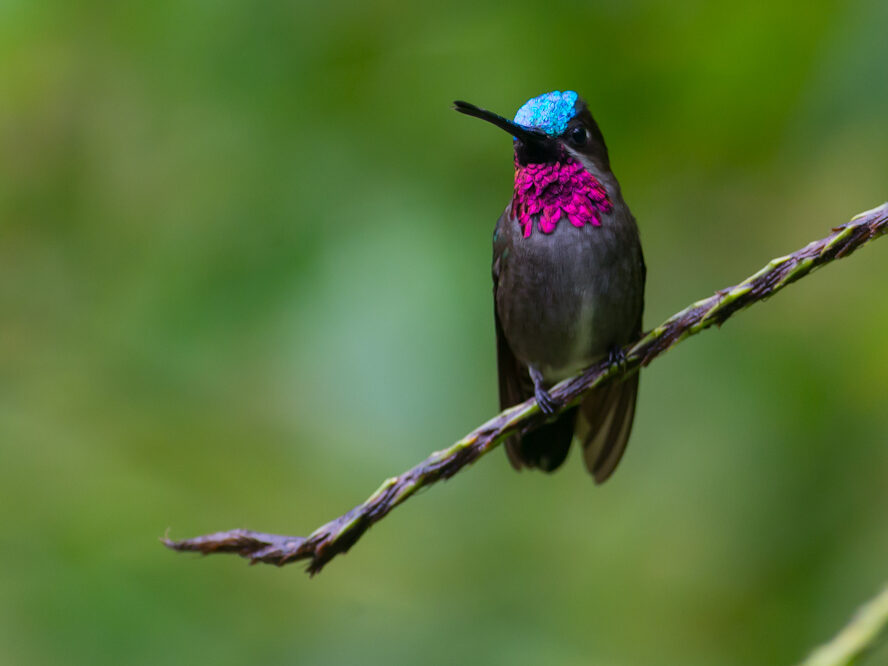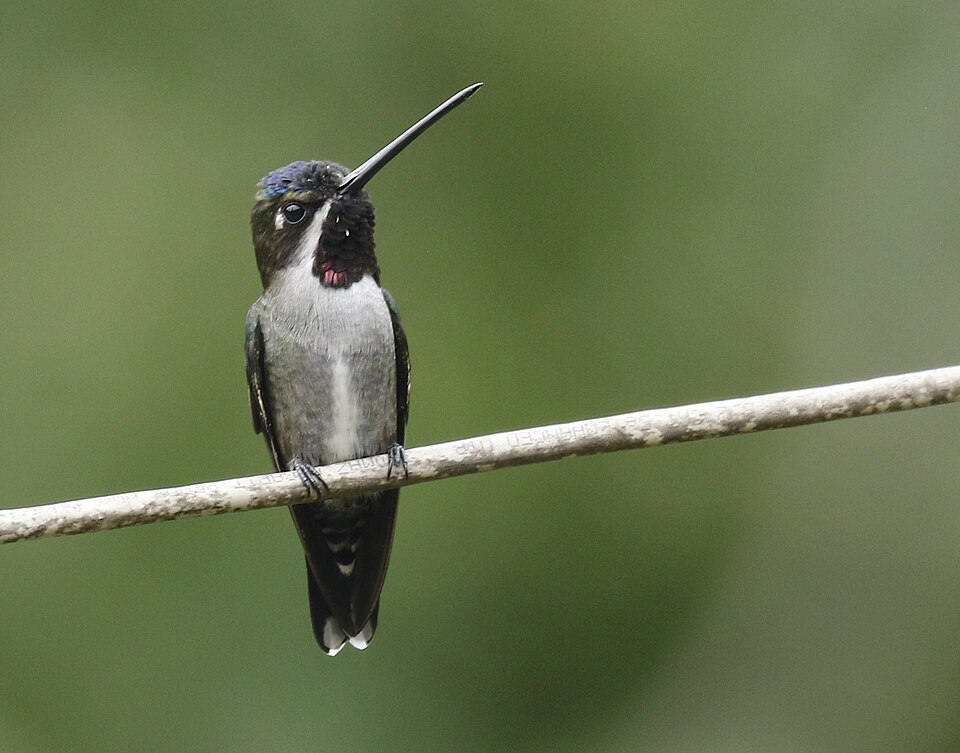
Heliomaster longirostris
Overview
Heliomaster longirostris, known as the Long-billed Starthroat, is a medium-sized hummingbird found throughout parts of Central and South America. It is recognized for its elongated bill and iridescent plumage, particularly the glittering gorget of males.
Identification
This species typically measures around 11 to 12 cm in length. It features a long, straight black bill adapted for feeding on deep tubular flowers. The male has a brilliant violet-purple throat patch (gorget), while the upperparts are metallic green and the underparts are grayish-white. The tail is dark with a slight fork.

TonyCastro
Habitat and Distribution
The Long-billed Starthroat inhabits forest edges, clearings, plantations, and gardens, from sea level up to around 1,200 meters. Its range extends from southern Mexico through Central America and into parts of northern South America, including Colombia, Venezuela, and western Ecuador.
Feeding and Behavior
Heliomaster longirostris feeds on nectar from a wide variety of flowering plants, often hovering in front of blooms or perching while feeding. It also supplements its diet with small arthropods. It is generally solitary and not as aggressive as some other hummingbird species, although it will defend rich nectar sources.
Reproduction
Nesting usually occurs during the rainy season. The female builds a small, cup-shaped nest from plant fibers and spider silk, often attaching it to a branch or fork. She lays two white eggs and incubates them alone. After hatching, she continues to care for the chicks until they fledge.
Conservation
This species is currently classified as of least concern, with stable populations across its range. However, habitat degradation and pesticide use in agricultural areas could pose local threats.
